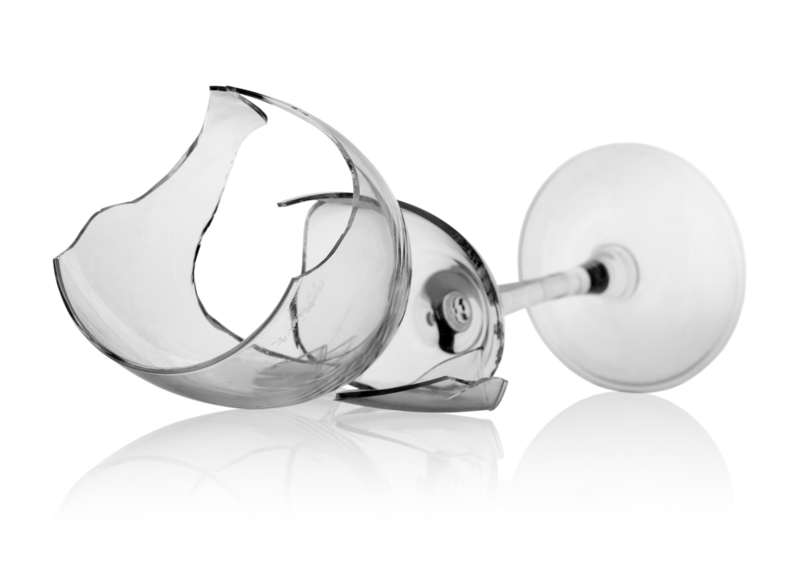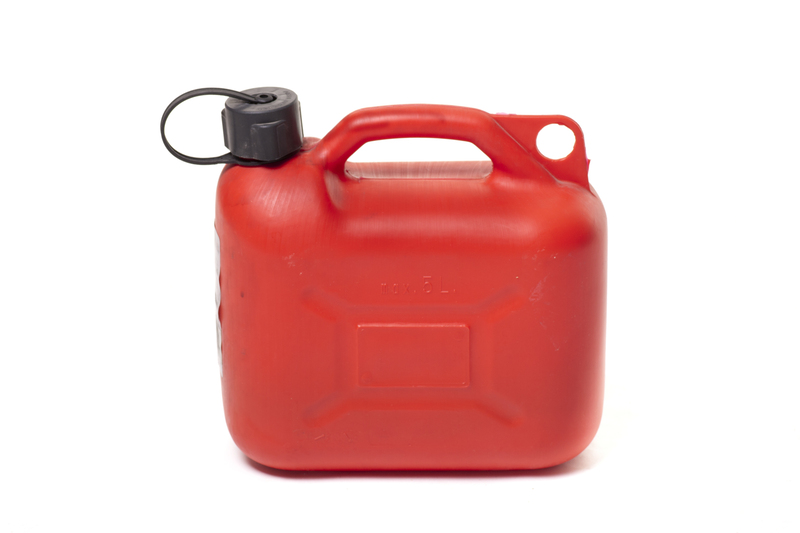Guide to Relocating Your Bed and Mattress
Posted on 19/06/2025
Comprehensive Guide to Relocating Your Bed and Mattress
Moving to a new home can be an exciting milestone, but for many, the thought of relocating large items like beds and mattresses can feel overwhelming. Whether you're shifting across town or to a new city, proper planning is essential to ensure your bed and mattress arrive safely and remain in great condition. In this guide to relocating your bed and mattress, we'll walk you through step-by-step instructions, valuable tips, and things to watch out for in the process.

Why Properly Moving Your Bed and Mattress Matters
Your bed and mattress are likely among the most used-and expensive-pieces of furniture you own. Improper handling during a move can result in broken frames, damaged mattresses, and even compromise your sleeping comfort for years to come.
Key reasons for properly relocating beds and mattresses:
- Maintain mattress integrity: Prevent sagging, lumps, or tears.
- Protect bed frames: Avoid scratches, broken parts, or warped frames.
- Save money: Reduce the risk of having to purchase replacements or repairs.
- Hygiene: Prevent dirt, pests, or moisture exposure during transit.
Preliminary Steps Before Relocating Your Bed and Mattress
1. Assess the Size and Type of Your Bed and Mattress
Different bed sizes (Twin, Full, Queen, King, California King) and mattress types (innerspring, memory foam, hybrid, latex, or adjustable beds) require different handling techniques.
Measure your mattress and frame: Document dimensions to ensure it fits through corridors, elevators, and door frames at both the departure and destination points.
2. Gather Moving Supplies for Your Bed and Mattress
- Mattress bags or covers (for dust, moisture, and pest protection)
- Bubble wrap and moving blankets (for bed frames)
- Furniture sliders and dollies (to ease the moving process)
- Cardboard boxes (for smaller bed parts, hardware, and bedding)
- Plastic bags (to store nuts, bolts, and screws from bed assembly)
- Labels and markers (for organization)
- Rope, straps, or bungee cords (to secure your mattress and bed parts in transit)
- Tool kit (for disassembly and reassembly)
Make sure you have all necessary materials ready before you start the process of relocating your mattress and bed.
How to Disassemble Your Bed for Relocation
Most beds require partial or full disassembly for safe moving. Here's a step-by-step guide:
Step 1: Strip the Bedding
Remove pillows, sheets, comforters, and mattress toppers. Wash and pack them in airtight bags or boxes.
Step 2: Disassemble the Bed Frame
- Remove the mattress: Place it flat on a clean surface or place it into a protective mattress bag.
- Take apart the headboard and footboard: Use your tool kit to detach these. Keep all screws, bolts, and brackets in labeled zip-lock bags.
- Disassemble side rails and slats: Separate rails, slats, or platform sections. Bundle them together for easier handling.
- Take photos during the process: This helps with reassembly.
Tip: If your bed has any special features (like adjustable bases or storage drawers), consult the manufacturer's manual for disassembly instructions.
Step 3: Protect All Bed Components
- Wrap wooden or upholstered parts in moving blankets or bubble wrap.
- Secure with tape or straps, but don't apply tape directly to wood or fabric.
- Keep labeled hardware bags taped to the largest component of the bed.
Moving the Mattress: Ensuring Proper Care
Why Use a Mattress Bag?
Mattress bags shield against dirt, moisture, and bugs. They are inexpensive and reusable solutions that protect your investment during relocation of your bed and mattress.
How to Put the Mattress in a Bag
- Slide the mattress vertically into the bag with the help of a partner.
- Seal the bag securely with packing tape at the open ends.
- Handle the wrapped mattress by its edges to avoid tears.
Tip:
*For memory foam or latex mattresses, avoid bending sharply. Roll or keep them flat as much as the space allows.*
Enlist Help for Large Mattresses
King- and queen-sized mattresses are heavy and awkward to maneuver. Ask friends or hire professional movers to avoid straining yourself or damaging the mattress.
Moving Methods: DIY vs. Professional Movers
Relocating beds and mattresses can be done yourself or with expert help. Each has pros and cons.
DIY Bed and Mattress Moving
- Pros: Cost-effective, more control over your belongings, flexible timing.
- Cons: Risk of injury, potential for mistakes, may require renting a vehicle or equipment.
Hiring Professional Movers for Your Bed and Mattress
- Pros: Experience with heavy, awkward items; liability coverage; faster process.
- Cons: Higher cost, scheduling constraints.
Choosing the Best Vehicle
- Small Moves: Minivans, SUVs, or pickup trucks for twin/full-sized beds.
- Large Moves: Rental box trucks for king/queen beds. Ensure the cargo area is clean, dry, and has tie-down points.
Transporting Your Mattress and Bed Safely
How to Load a Mattress Into a Truck or Van
- Keep the mattress flat whenever possible. If space is limited, stand it on its side and secure with straps to prevent sliding.
- Avoid stacking heavy items on top of the mattress.
- Stack bed frame components alongside the mattress and not between heavy furniture.
Securing Your Mattress During the Move
- Use strong tie-down straps to keep everything in place.
- Pile soft items (like bags of clothing) against the mattress for additional stabilization.
- Double-check straps before departing.
If you're transporting on the roof of a vehicle, only do so for short, slow-distance moves. Secure tightly-never travel on highways in this manner.
Unloading and Reassembling After the Move
How to Unpack and Inspect
- Remove moving blankets and mattress bags outside or in a garage to prevent tracking in dust or pests.
- Inspect all parts for damage before moving indoors.
- Allow mattresses to air out for 1-2 hours, especially if wrapped for a long period.
Reassembling Your Bed Frame
- Identify all parts and hardware using your labeled bags and photos.
- Assemble the main frame: Start with the side rails, then headboard and footboard.
- Add slats or platform base per the manufacturer's design.
- Place mattress on top and test for stability.
Pro Tips for a Smooth Bed and Mattress Relocation
- Time your move to avoid rain or extreme temperatures, as moisture can lead to mold or mildew.
- Deep-clean mattresses and frames before packing to prevent transporting allergens or bugs.
- Consider mattress toppers and pillows: Transport in clean, sealed bags to maintain freshness.
- Upgrade old mattresses: Moving is a perfect time to dispose of sagging or stained mattresses and invest in a new one for your new home.
- Check new regulations: If relocating cross-state or internationally, some areas have mattress-specific moving requirements for hygiene or pest control reasons.
Common Mistakes When Moving Beds and Mattresses
- Not using protective covers. Mattresses are vulnerable to dust and moisture in moving vehicles.
- Bending or folding mattresses incorrectly, which can ruin memory foam or inner springs.
- Losing hardware. Always store screws, bolts, and washers in labeled bags.
- Forgetting to measure doorways. Dimensions at both move-out and move-in locations are critical.
- Dragging beds or mattresses. This damages floors, corners, and fabric-always lift or use sliders.
Special Considerations for Different Types of Mattresses
Relocating Memory Foam Mattresses
These mattresses are heavier and more flexible. Never fold them sharply, as it can break the foam's structure. Always keep them flat or rolled as instructed by the manufacturer.
Relocating Innerspring Mattresses
Innerspring mattresses must be kept flat to preserve their shape and inner coil integrity. Avoid standing them on their edge for extended periods.
Transporting Latex Mattresses
Be aware that latex is heavy and can tear easily. Protect corners and use extra hands to move safely.

When to Consider Replacing Your Mattress During a Move
- Visible sagging or indentations.
- Stains or lingering odors.
- Mattress is over 8-10 years old.
- Bug or mold infestation.
If your mattress is past its prime, relocating is the perfect opportunity to upgrade to a new one for better sleep and a healthier home.
Conclusion: Relocating Your Bed and Mattress with Confidence
Relocating your bed and mattress doesn't have to be stressful. With the right preparation, supplies, and techniques, you can safely transport these essential furnishings and ensure a smooth transition into your new home. Remember to protect, disassemble, move, and reassemble carefully-your future self will thank you for a comfortable, clean, and hassle-free night's rest.
FAQs on Moving Beds and Mattresses
- Can I move a mattress by myself? While possible for smaller beds, larger mattresses are best moved with a partner or professionals to avoid injury and damage.
- How do I keep my mattress clean during a move? Use a high-quality mattress bag, and avoid setting it directly on the ground or under heavy furniture.
- Is it worth paying for professional movers for my bed and mattress? If you have a heavy, complex, or expensive bed, the investment can provide peace of mind and reduce the risk of costly damage.
- What should I do if my mattress gets wet during the move? Dry it thoroughly as soon as possible, ideally in sunlight. Mold and mildew can form quickly in damp conditions.
Planning to relocate soon? With this ultimate guide to relocating your bed and mattress, you're equipped to make your move safer, easier, and stress-free!
